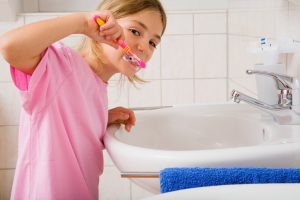Brushing, Flossing, and Other Daily Oral Health Practices: Are You Doing Them Correctly?
It’s likely not a surprise that brushing and flossing your teeth every day is the most important thing you can do to keep your mouth healthy and your teeth clean. In fact, most people hear this from the time they’re children. However, many people don’t realize that they’re not actually brushing as effectively as they could be. Read on to learn more about the correct way to assure you’re doing your dental home care correctly. Then reach out to California Dental Group at (800) 407-0161 to make an appointment for a cleaning and exam.
Brushing correctly starts with using the right tools
First and foremost, make sure you’ve got the right tools. The size of the head of your toothbrush should work well in your mouth. If you have a toothbrush that’s too big, then you’ll likely not be able to get deep into the corners where bacteria likes to accumulate. You also want to make sure that you’re not using a toothbrush that’s too old. If you can see that the bristles are worn out, then it’s time to get a new brush. Generally speaking, we recommend getting a new toothbrush every three months.
Next, look at your toothpaste. There are many different types of toothpaste out there and the right type for you may not be the right type for someone else. However, unless you have an allergy to it, we recommend using a toothpaste with fluoride. We also recommend that you use a mouth rinse after you’re doing brushing, and it should also include fluoride. Finally, look for toothpastes and mouth rinses that are approved by the American Dental Association (ADA).
The correct brushing technique
To get started, put toothpaste on your brush and hold your brush at a 45-degree angle. Use small, circular movements to brush your teeth. Go through your entire mouth making sure that you get the front of your teeth, the back of them, and anywhere else that food could accumulate when you’re chewing it. Get as much of the space between your teeth and gums as you can. Keep in mind that bacteria will gather in smaller spaces so make an effort to get in there. If you run out of toothpaste, add more. In total, it should take about two minutes for you to brush your teeth.
Once you’re done brushing, spit the toothpaste out but don’t rinse right away, with water or mouth rinse. Instead, wait about a half an hour. This is the best way to ensure that the fluoride can do its job on your teeth.
Tips for flossing correctly
The biggest thing to keep in mind with flossing is that you don’t want to hurt your gums. It may be that your gums bleed, which is a sign of gum disease and not a sign that you should stop flossing. In fact, it more likely means that you need to floss more consistently. If you feel any pain then it’s likely you’re being too hard on your gums and should treat them more genetly.





